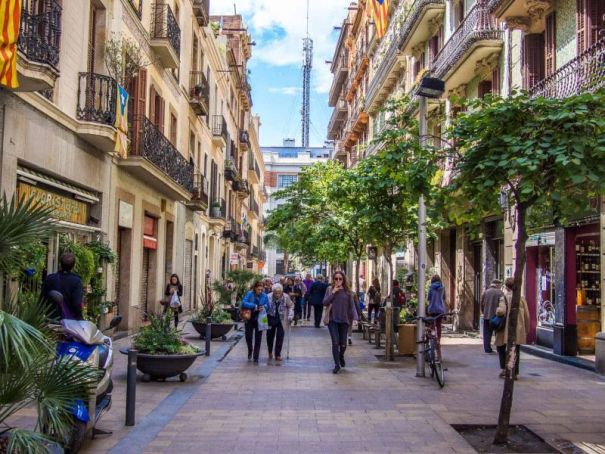Gràcia neighborhood
The municipal district of Gràcia, hemmed in between Sarri-Sant Gervasi, Horta- Guinard and Eixample, has retained a distinctive Catalan identity despite its proximity to the centre of cosmopolitan Barcelona.
At one time a separate village, Gràcia was included into the city connurbation in 1897, becoming an industrial district in the 1930s. Traditionally a left-wing, Republican area, the district which is now solely residential and commercial still has a markedly political tone and the population is a mixture of students, lefty bohemians and solid middle class.
The area boasts a number of historic squares with busy local bars and restaurants, like the Plaa del Sol, and the Plaa Ruis i Taulet where the old town hall and clock tower are located. Attractive parks are scattered all round the district to the north, a former quarry, the Parc de la Crueta del Coll, has a swimming lake open in the summer months.
Nearby, on the Muntanya Pelada, stands the Parc Grell, now a World Heritage Site, where Antoni Gaudi lived and worked for 20 years. Gràcia also manages to cram a large number of theatres and cinemas and several municipal markets into the relatively limited amount of space within its boundaries.
What once were farmlands lying to the north of the old village, is now the site of the modern suburb Gràcia Nova, home to a thriving commercial centre where local shops selling fresh produce sit comfortably side-by-side with corporate chain stores. Public transport is excellent with an extensive bus network and two underground lines serving the area.
General Info
View on Map
Gràcia neighborhood
Gràcia, Barcelona, Spain


















